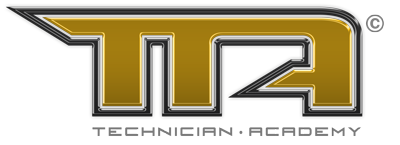Dispatch – Who is going to be doing the service?
As with most other things, each shop has their own way of doing things. You may have a shop foreman that makes that decision or it may be the advisor. Either way, the logistics of keeping a flow of vehicles through a shop can be a challenge. Which tech is best qualified for a particular job? Does it require a specific bay? Will this job keep a bay tied up for several days? Does shop layout allow one vehicle to block another one in? These questions and more need to be thought through and planned like a General going into battle.
While dispatching is a complete study of its own, some potential problem areas are: keeping everyone working, not playing favorites, juggling the right job to the right person, keeping the customer happy, and keeping the job profitable.
Go With the Flow
Maintaining a constant flow through the shop is critical. Who has priority? Are parts needed? When will they be here? Is the job sold? Should we push out a vehicle waiting for approval or parts? What’s coming in later? Is there enough work for everyone? Are we overloaded? And the list goes on. Like most other things, every shop either has a plan in place or doesn’t. Here is a system that seems to have worked for me:
Get car in shop! There are 2 paths of thinking on this subject. One is “Can you bring it now?” and the other is actually scheduling workload to maintain a steady flow without overloading. I’ve worked with both programs. In my opinion, it depends on how busy the shop is and can it handle “bring it now” thinking. On the one hand, “bring it now” gives a customer the feeling that they are important to you and that you can make their pain go away quickly. However, if they “bring it now” and you don’t touch the vehicle for days or even a week, you have NOT impressed your customer.
What is the Real Problem?
An advisor cannot advise until they know what service or repair is needed. Since advisors do not diagnose, they must rely on the technician for information. I cannot say strongly enough that it is imperative that a vehicle come in as soon as possible for testing and inspection. This is especially important if you are a “bring it now” shop. Until a technician has given the advisor information on what’s wrong and which parts are needed, the advisor cannot make estimates, sell the job or order parts. If you are in a more rural area, there may be a cutoff time to get parts delivered.
How Much and How Long?
Now it’s time to judge how long until parts arrive, how long the repair will take, and when we should advise the customer that their vehicle will be finished? Always allow for Murphy ’s Law: anything that can go wrong will. We always want to tell the customer what they want to hear, or in my case what I expect to happen. IF can be a VERY big word. If the supplier actually delivers the right part at the right time for the right price, and if the technician is efficient with his time, doesn’t get sick or decide not to come to work, if the job ahead of this one gets done on time and the bay is available, and if someone else doesn’t push another vehicle ahead of this one, then we should be able to reasonably expect completion by a specific time.
Is it REALLY Done?
So the tech has handed you the keys and says it’s done, but is it? Techs are a curious species of animal. Don’t get me wrong, techs are amazing creatures able to find and fix some pretty wild things, but they can be very focused on single items and miss some others. Part of calling a job “done” is making sure every part of the process was followed and completed. Is the PMI completed and signed? Was a follow-up test drive performed? Does your shop have a Quality Assurance program in place? Was that procedure followed? What recommendations were made and are they recorded? Are there any hand prints or footprints left in the vehicle?
It is Finished!
Good job everyone! Now comes the part where we get paid for what we do. But don’t get too excited yet, there are still the Delivery and the Call-back procedures to get through.
Stay tuned for the next episode of the “The Process” coming up next month.
 Article By: Bruce McDowell
Article By: Bruce McDowell
Bruce is currently a Service Advisor for Garber Diesel Service Truck & Trailer Service Center
Bruce’s credentials include: AMAM through AMI, ASE Certified Service Advisor, Ford Motor Company – Master Service Manager, Master Service Advisor, Master Parts Manager, Master Warranty Administrator plus 2 Management Degrees, Stationary Engineer License, and Retired Navy. And above all… modest.

